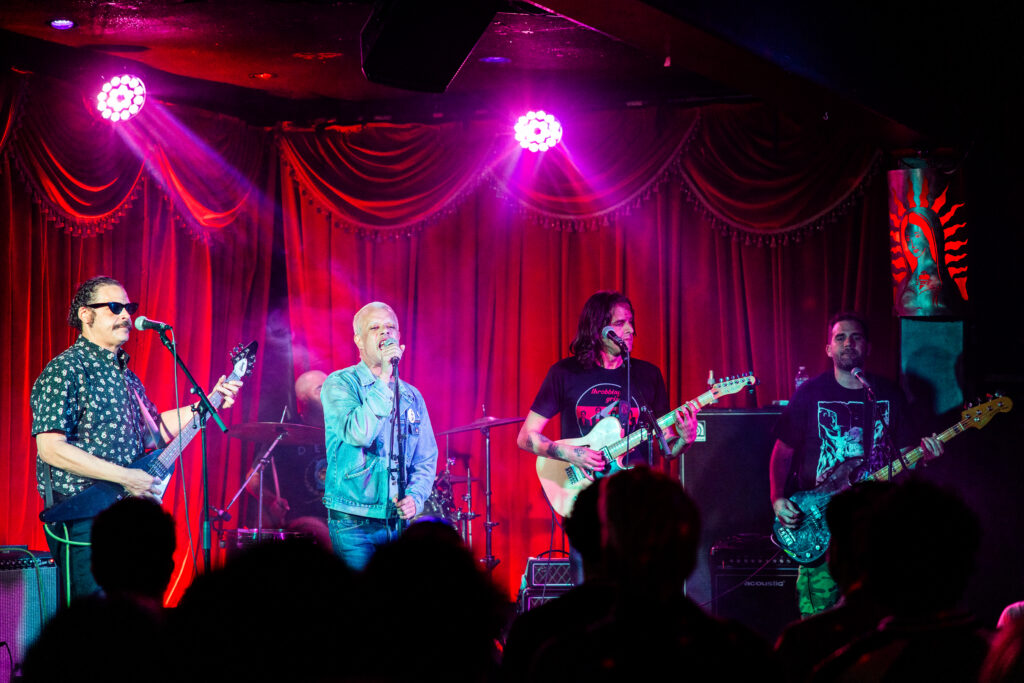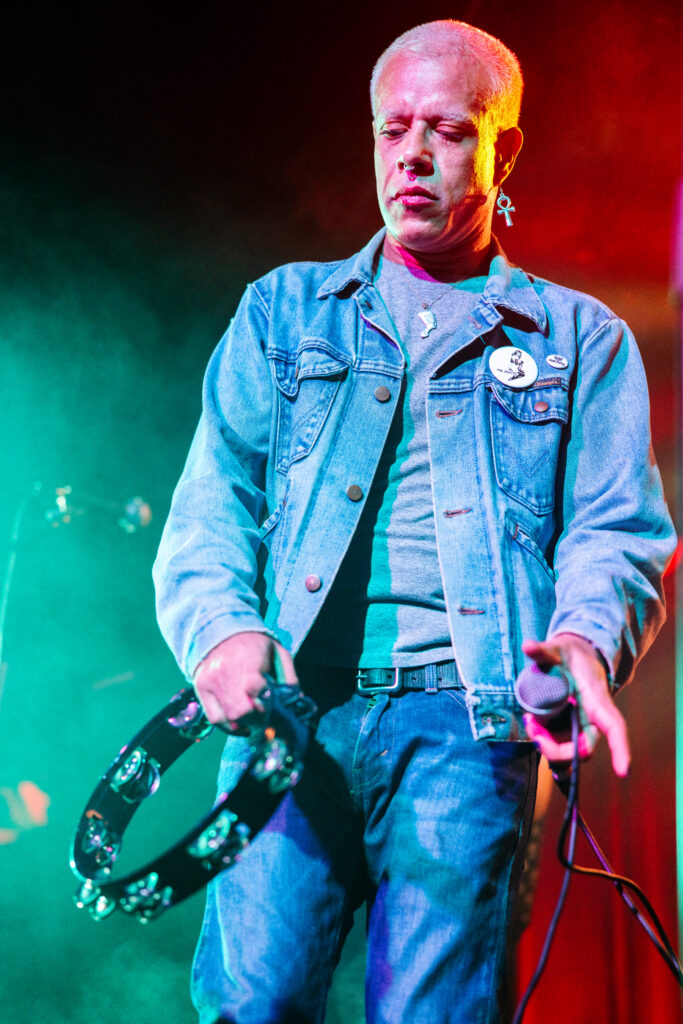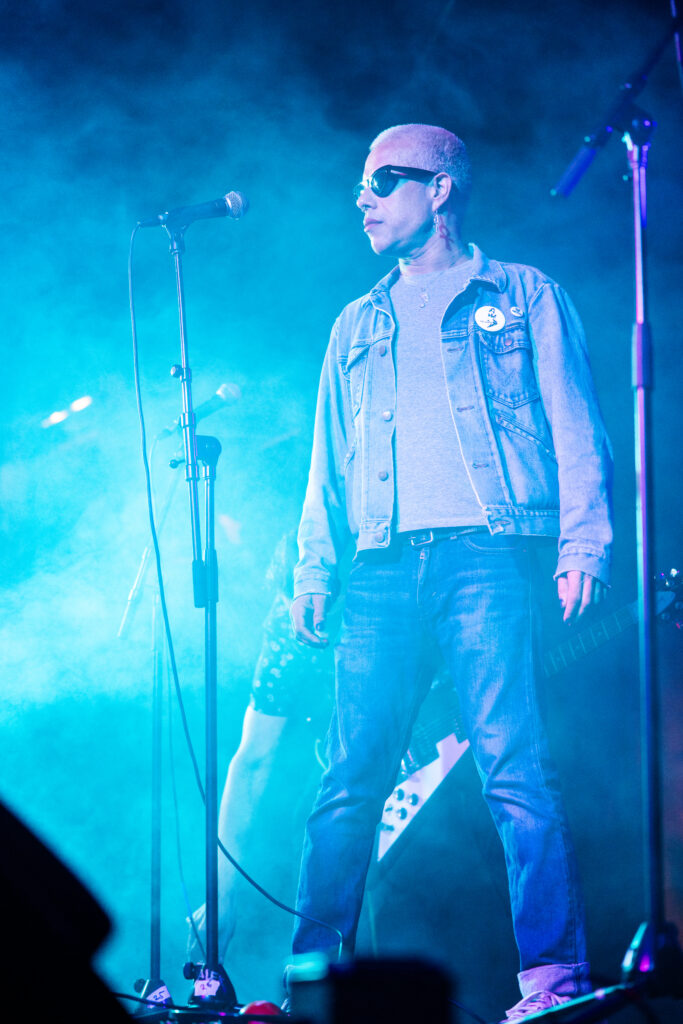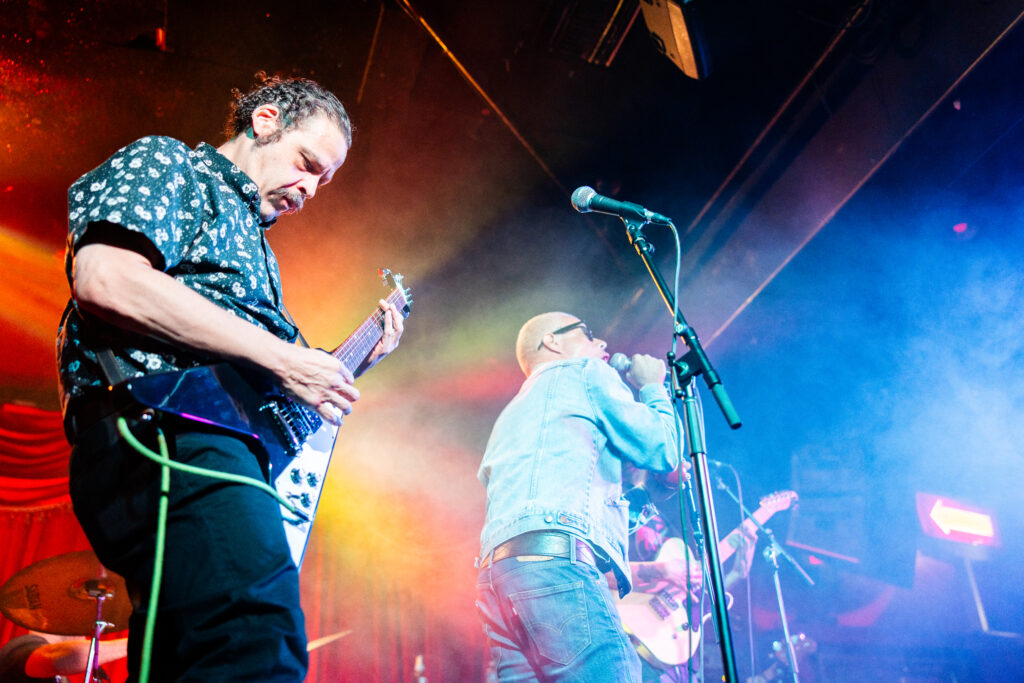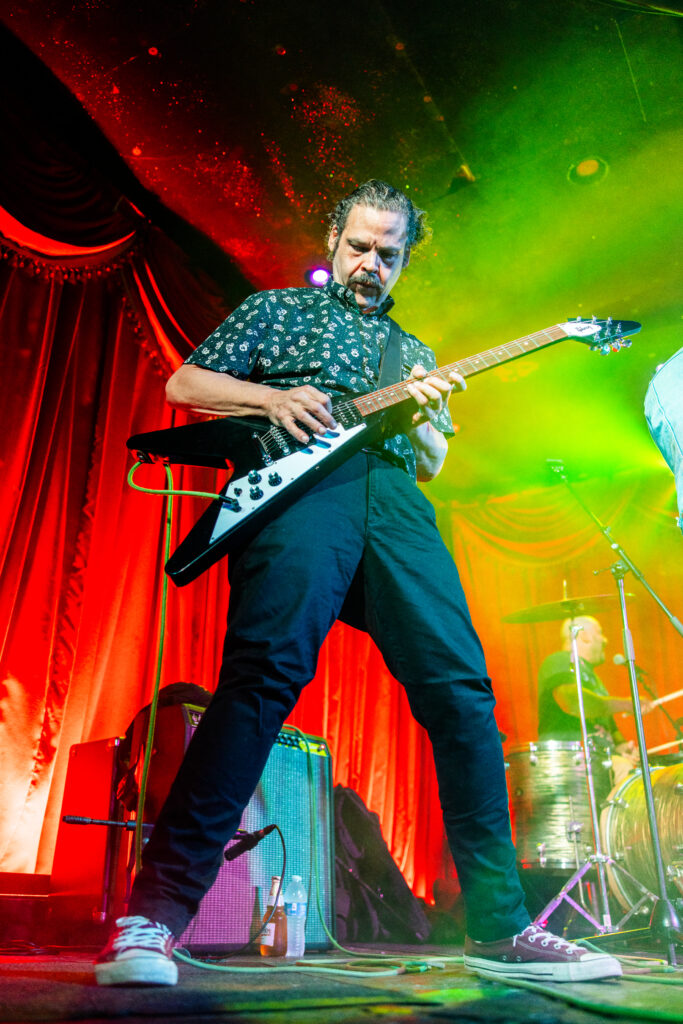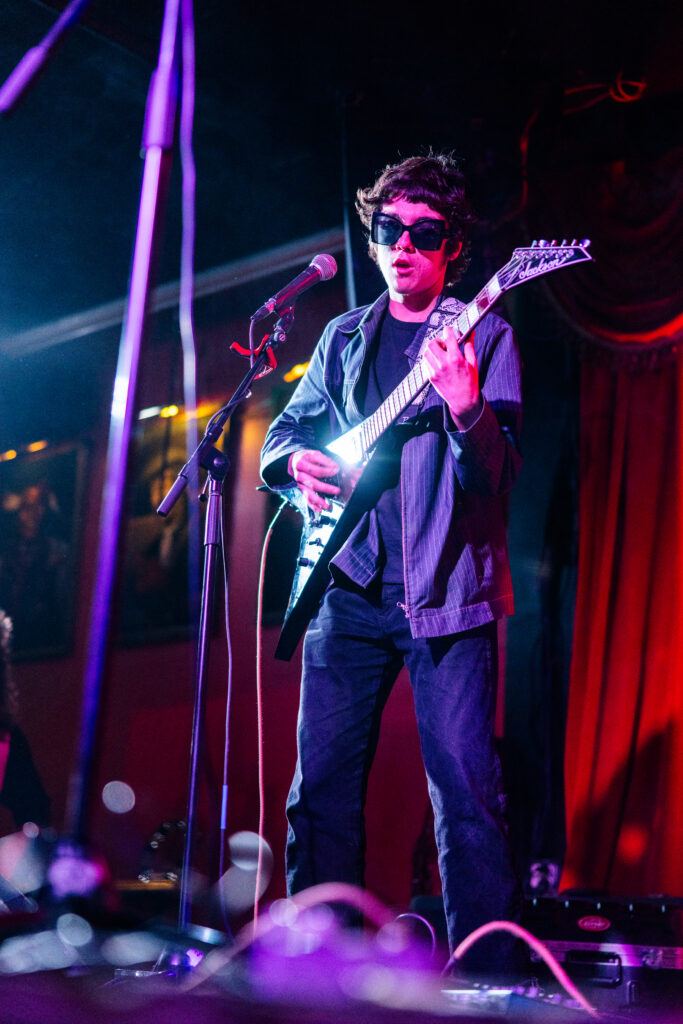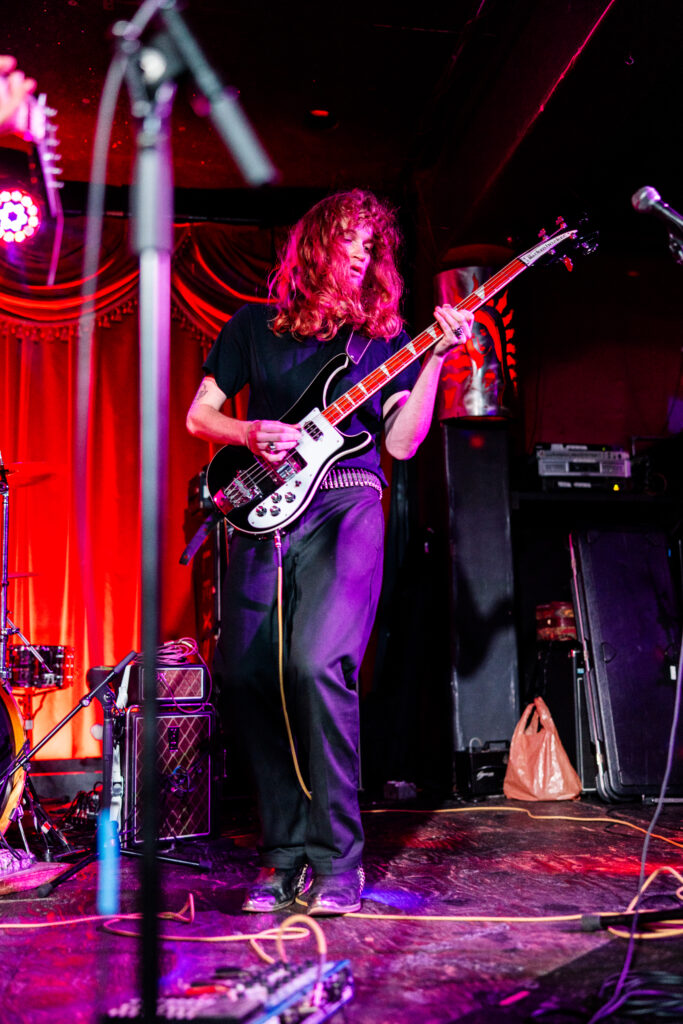
Black Bubblegum and William Gonzalez’s Los Angeles
Salvadoran-American poet William Gonzalez is intimately connected to the streets of Los Angeles. A product of the MacArthur Park, Pico-Union neighborhood, the man is an award-winning author, son, father and friend to all. Born at County USC-General Hospital, Gonzalez is Los Angeles as it gets. His first two books, Black Bubblegum and Blue Bubblegum are innovative works that peer behind the glossy facade of Los Angeles to reveal the blood and bones of the city. His newest book, Red Bubblegum, is set to be published in late Spring 2017.
A Poet Born for These Times
Gonzalez is closely connected to Los Angeles Poet Laureate Luis Rodriguez and Tia Chucha’s Cafe Cultural, the bookstore/gallery space Rodriguez co-owns and operates with his wife Trini Rodriguez in the Northeast San Fernando Valley. Their close connection is a dream come true for Gonzalez because Rodriguez was a longtime hero of his that he had read for many years before they met. Their friendship has developed over the last four years. During this time Gonzalez has connected with the legendary poet and done dozens of events at Tia Chuchas. Another significant voice from Tia Chucha’s is the prolific poet Jeffery Martin. Martin and Gonzalez are close friends that have collaborated on hundreds of readings over the last several years. Martin recently told me that, “William Gonzalez is a poet born for these times. His pen is concise and unafraid to speak about the world he sees and navigates through. He is inspiring because he writes the stories that everyone knows but few tell.” He tells these stories in Black Bubblegum.
Black Bubblegum includes 24 poems, 25 short stories and 18 pieces in Spanish. At just over 200 pages, the work is highly quotable. It also won first place in the New England Book Festival “Wild Card,” category in 2013 and won an honorable mention in the San Francisco Book Festival “Poetry,” category. Gonzalez has garnered these accolades because his work is equally inspiring, thoughtful, raw and hilarious. A core spirit of the book revolves around explicating his Los Angeles youth. In poem after poem and story after story, Gonzalez takes his readers up and down 6th Street and across Alvarado or as he phrases it across the “invisible boundary lines.”
Gonzalez spent many years of his 1980s childhood living on Bonnie Brae between Wilshire and 6th Street. A few streets east of MacArthur Park, this area is also called Westlake and it overlaps with the Pico-Union neighborhood just south. Known as one of the densest districts west of the Mississippi, the congested landscape surrounding his home made him acutely aware of urban reality. “Growing up around the MacArthur Park area during the 1980’s and 1990’s,” he tells me, “paints memories of living inside a third world country within one of the most powerful countries in the entire world. You name the social issue, and this was the area where a Sociology Professor could come stand on the corner of 6th and Bonnie Brae on a Friday night just to find out that everything he learned at an elite university was a lie.”
The Biggest Rats in the City
After reading poetry with Gonzalez on several occasions over the last few years, we recently got together to chop it further about his work and the city we both deeply love. We met on a December Sunday at a Starbucks on the corner of Wilshire and Union because the parking there was free and easy. When I arrived he told me that on the north side of the parking lot where a larger shopping complex now stands was an apartment building he once lived in for several years called, “Los Campanarios.” He laughed and told me that the building was notorious for having “some of the biggest rats in a building in our city.” He laughs more about this and points out the irony of the Starbucks and corporate stores now adjacent to the same property. Though gentrification is gradually sweeping his childhood neighborhood, he vows not to let the history be erased. His prolific and candid writing ensures that the stories from his childhood will always live on.
Swimming Inside Inner-City Los Angeles
In addition to living in the Westlake District, Gonzalez also spent a few years living in Watts and South Los Angeles. He moved to 112th and Central for a few years during his teens and he attended Cleveland High School in the San Fernando Valley. “I was the only Salvadoran dude on an all Black bus,” he says. One of his pieces in Black Bubblegum is titled “Unity,” and this is a principle Gonzalez has lived by from his early childhood. Though he was surrounded by dangerous elements, he was always able to survive, thrive and make friends with everyone no matter their race or socioeconomic status.
These formative experiences are central to his identity and his writing. “Living in Pico-Union/ Westlake area-South Central and Watts shaped me by teaching me how to navigate life on a daily basis while everyone around me seemed to drown,” he confesses. “It taught me how to swim inside inner-city Los Angeles no matter what was happening around me.”
In poems and short stories like “Mother’s Tears,” “Rascal,” “Murder,” “Paloma,” and “PJ,” Gonzalez celebrates friends he grew up with, local street vendors and remembers those who are no longer with us. Many of the pieces go back and forth between poignant observations and comical images in just a few lines. The short story “Ghetto Barter,” demonstrates how far someone will go once they become an addict. As sad as the piece, Gonzalez also reminds us of the absurdity of their behavior. For example, “Tim would end up bartering his car’s pink slip for two pieces of crack.”
Within the constant realism and tragedy that Gonzalez’s work conveys, there is also a great triumphant tone because he lived amidst it all by never fell victim to it. He celebrates his mother who taught him the value of working hard. She worked for years cleaning hospitals before opening her own Botanica in 1983. “I learned from my mother not to ever accept free money from the government,” he says, “and how to make money. Two of the most important lessons ever.” He also appreciates her because she taught him how to have compassion for others. He pays tribute to her in the poem, “A Mother’s Question.” He is carrying on his mother’s steadying influence as the father of two daughters. His daughter recently read her poems with him at Tia Chuchas. Being a dad is a top priority for Gonzalez. He attends every event his daughters are involved with. “I didn’t have mentors growing up,” he shares. “My father left me on my 5th birthday.” His desire to be different from his own father is why he works so hard and is so attentive to his children.
A Massive Tsunami
As his own childhood unfolded, the neighborhood evolved and slowly became what it is now infamous for. “I clearly remember when both theatres were open on Alvarado,” Gonzalez recalls. “I am talking really early 80’s. Things were actually pretty calm during these times like tiny ocean waves dancing to soothing music right before a massive tsunami hit.You could walk to MacArthur Park, buy nachos, and a soda pop for three quarters at an actual concession stand, then walk over and ride the pedal boats through the lake.”
The short story, “Ducks,” captures the dichotomy of MacArthur Park. Once called Westlake Park and considered the crown jewel of Los Angeles parks and the entire L.A. Parks and Recreation Department, Gonzalez explains how now, “You can see plastic cups, spoons and plates floating on top of the lake’s green mawkish water. Dark black clouds slowly creep over the park, attracting the criminal night shift.” In spite of the pollution and the park’s nonstop action, dozens of ducks still call the lake home. Gonzalez captures all of this. He has seen the park in all of its ranges from the pedal boats, fresh nachos to the criminal underworld. He points the finger at crack cocaine as the force which made everything change. “Massive oceans arrived inside slices of crack cocaine,” he explains “and literally set everything around us on fire. Something within me gave me an ability to sense change in people around me.”
The local gangs evolved just as quickly. “The gangs went from fist fighting to stabbing, from stabbing to shooting each other,” he says. In the short story, “Zipper,” he describes a driveby shooting of a young gangster “Little Joe,” and the ladder of staples used to sew Little Joe’s chest up after he took three bullets. Gonzalez laments, “Six months later Little Joe is back out on the streets throwing up gang signs. He lifts up his shirt to show everyone in the community the permanent zipper on his stomach bragging about it like if the zipper is some sort of honorary stamp.”
Gonzalez does not judge these figures in his work, he just wants to record their stories. He hopes that readers can understand the real beat of the city through his work. Most of all, Gonzalez loves his people and hopes that his eyewitness accounts can lead to greater awareness and redemption. In poem after poem and story after story, he tells it like it is. “I remember a very nice family man who lived on our block,” he says. “He went from a regular human being to instantly turning into a crazy man taking off his clothes and running naked down the street during rush hour. (to walking like nothing had happened the next day.)”
Breaking the Cycle
Gonzalez tells me that in junior high school he had a teacher named Mr. Lawrence that recognized his talent and encouraged him to write his own stories. He has always loved reading authors like James Baldwin, Luis Rodriguez and Kurt Vonnegut. He slowly began writing his own poems through his teen years. “Poetry began to inspire me when I would tag words on public walls in Los Angeles during the 1980’s-1990’s,” he says. “I was addicted to words that rhymed. This began my quest for building up my vocabulary word by word.” He wanted to tell the truth as he saw it and not sugar coat his words. “Flower poetry didn’t interest me; so I would write quietly and without people seeing me write about the realities I was facing.” He tells these realities in pieces like “Pomegranate,” and “American Apartment Scene.”
In a piece titled “3:40 A.M.,” he closes the poem with, “The million dollar building is now complete/ No more work, no more money, the laborers are now obsolete.” Gonzalez writes his work for “the hands that built L.A.” While we sat and spoke at Starbucks that Sunday, he coincidentally saw a few of his old friends who warmly greeted him with reverence and enthusiasm. Los Angeles will always be his home.
The last lines of his poem, “Invisible Boundary Lines,” capture the spirit of his work: “A place where human souls are made out of stone / Westlake/Pico-Union district a transient abandoned zone / where the son of an immigrant will one day reach a writing milestone / by scribing true authentic words in the middle of their backbone.” There’s no question that poems emanate from the center of William Gonzalez’s backbone. After winning a few awards for Black Bubblegum, he is excited for what the future brings and the release of his next book later this year. Though many writers attempt to make the claim, William Gonzalez really is a poet for the people.
Black Bubblegum and the forthcoming book Red Bubblegum can be purchased at Tia Chuchas Bookstore in Los Angeles or on Amazon.


















